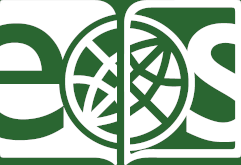The Chapel Hill conference also marked the establishment of the Institute of Field Physics, directed by Bryce and Cécile DeWitt. The conference was the inaugural conference of this institute.
1 The Chapel Hill Conference in Context
Dean Rickles
The Original Chapel Hill Report
Foreword
Cécile DeWitt
PARTICIPANTS IN THE CONFERENCE
Session I Unquantized General Relativity Chairman: B. S. DeWitt
3 The Present Position of Classical Relativity Theory and Some of its Problems
John Wheeler
4 The Experimental Basis of Einstein's Theory
R. H. Dicke
Session II Unquantized General Relativity, Continued
Chairman: P. G. Bergmann
5 On the Integration of the Einstein Equations
André Lichnerowicz
6 Remarks on Global Solutions
C. W. Misner
7 Solving The Initial Value Problem Using Cartan Calculus
Y. Fourès
8 Some Remarks on Cosmological Models
R. W. Bass, L. Witten
Session III Unquantized General Relativity, Continued
Chairman: H. Bondi
9 Gravitational Waves
L. Marder, Presented by H. Bondi
10 Gravitational Field of an Axially Symmetric System
N. Rosen, H. Shamir, Presented by F. Pirani
11 The Dynamics of a Lattice Universe
R. W. Lindquist
Session IV Invited Reports on Cosmology Chairman: F. J. Belinfante
12 Measurable Quantities that May Enable Questions of Cosmology to be Answered
Thomas Gold
13 Radio Astronomical Measurements of Interest to Cosmology
A. E. Lilley
Session V Unquantized General Relativity, Concluded
Chairman: A. Lichnerowicz
14 Measurement of Classical Gravitation Fields
Felix Pirani
15 Correspondence in the Generalized Theory of Gravitation
Behram Kursunoglu
16 Presentation of Work by T. Taniuchi
Ryoyu Utiyama
17 Negative Mass in General Relativity
Hermann Bondi
Session VI Quantized General Relativity Chairman: J. A. Wheeler
18 The Problems of Quantizing the Gravitational Field
P. G. Bergmann
19 Conceptual Clock Models
H. Salecker
20 The Three-Field Problem
F. J. Belinfante
Session VII Quantized General Relativity, Continued Chairman: A. Schild
21 Quantum Gravidynamics
Bryce DeWitt
Session VIII Quantized General Relativity, Concluded Chairman: V. Bargmann
22 The Possibility of Gravitational Quantization
23 The Necessity of Gravitational Quantization
Closing Session Chairman: B. S. DeWitt
24 Divergences in Quantized General Relativity
S. Deser
25 Critical Comments
R. P. Feynman
26 Summary of Conference
P. G. Bergmann
27 An Expanded Version of the Remarks by R.P. Feynmanon the Reality of Gravitational Waves
B
Babson, R.
Bahnson, A.
Bargmann, V.
Bass, R.
Belinfante, F. J.
`Muddified theory’
Beltrami operator
Bergmann, P. G.
Betti numbers
Bianchi identities
Birkhoff’s fundamental theorem
Bondi, H.
- 1
- 2
- 3
- 4
- 5
- 6
- 7
- 8
- 9
- 10
- 11
- 12
- 13
- 14
- 15
- 16
- 17
- 18
- 19
- 20
- 21
- 22
- 23
- 24
- 25
- 26
- 27
- 28
- 29
- 30
- 31
- 32
- 33
- 34
- 35
- 36
- 37
- 38
- 39
- 40
- 41
- 42
Born-Infeld theory
Brill, D.R.
Buckingham, M. J.
F
G
Gauge theoretic constraints
Dirac's Theorem
Dirac's method
Dirac’s method
Fermi’s method
Géhéniau, J.
General covariance
General relativity
analogy with electromagnetism
and atomic clocks
classic tests of
divergences
on a computer
variational principle
Geons
thermal geons
George Rideout
Glenn Martin Company
Global solutions
Gold, T.
Goldberg, J.
Gravitational waves
Gravity as a regulator
Gravity Research Foundation
Green's functions
Green’s functions
Gupta, S.
Information
ISBN
978-3-945561-29-4
DOI
10.34663/9783945561294-00
Pages
300
Publication Date
Feb. 14, 2011
Print on Demand
currently unavailable
Suggested Citation
Rickles, Dean and DeWitt, Cécile M. (2011). The Role of Gravitation in Physics: Report from the 1957 Chapel Hill Conference. Berlin: Max-Planck-Gesellschaft zur Förderung der Wissenschaften.
Submitted by
Jürgen Renn, Alexander Blum and Peter Damerow
Editorial Team
Beatrice Gabriel

